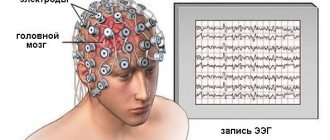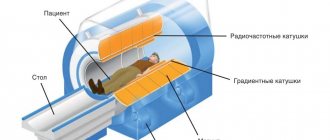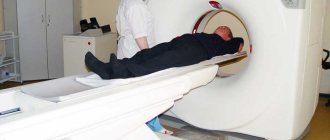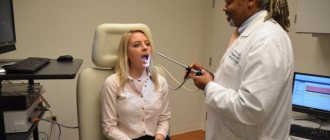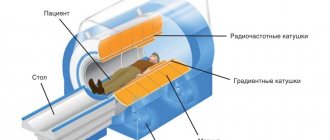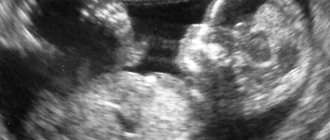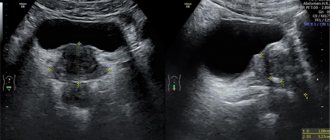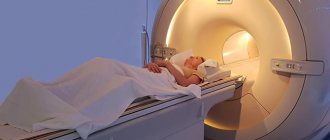For patients with fear of closed spaces, diagnosis using a tomograph is not always acceptable. After all, how to do an MRI if claustrophobia does not allow you to stay inside the machine for a long time and provokes panic attacks. Today, medicine offers a lot of methods for examining the body, but magnetic resonance imaging stands out among them for a number of reasons. This method is universal due to the fact that it is safe and highly informative. Despite a number of advantages, MRI still has its disadvantages. Among them is that the patient is placed in a closed machine for scanning. This means that those who are afraid of confined spaces will find the procedure difficult. However, it is possible to do it!
How is tomography performed?
The scanning procedure is carried out in a special room, where the patient is placed horizontally on the table, laid flat and comfortable, if necessary, pads and bolsters are placed under the limbs, then the legs and arms are secured with belts, and the table slides into the machine. A tomograph is a large capsule in which magnets are placed; under their influence, particles in the human body are aligned in a certain way, which makes it possible to read information about an organ in each layer, almost cell by cell, after which the computer converts the information into a picture, displaying a three-dimensional image on the diagnostician’s monitor. several projections. You can take pictures of blood vessels and nerve endings.
Despite the fact that the tomograph has good ventilation, fresh air supply and a comfortable temperature, it is still not an easy task to stay in a closed space for a long time. And for those suffering from claustrophobia it is simply real torture. In addition, examination rules require immobility throughout the entire tomography procedure.
If you are afraid of confined spaces, MRI is done under general anesthesia or using sedatives.
Claustrophobia as one of the contraindications
As mentioned above, one of the advantages of MRI is safety. However, the procedure has a number of contraindications, in the presence of which the study is prohibited, since there are threats to the patient’s health and failure of diagnostic equipment. These include:
- electronic implants in the body, such as a pacemaker or hearing aid;
- pins or metal structures;
- clipping of cerebral vessels in the medical history.
Claustrophobia is not an absolute contraindication to MRI.
Let us immediately make a reservation that true claustrophobia - a mental disorder characterized by a pronounced fear of being in a closed space, with accompanying clinical symptoms - is very rare. As a rule, such a diagnosis is established by a psychiatrist. At the same time, the development of a panic attack when entering a narrow, confined space is a frequent occurrence. Patients have different degrees of severity of such manifestations.
In people suffering from a fear of closed spaces, this pathology manifests itself in different ways. Some begin to experience tachycardia, a feeling of fear when entering a locked or cramped room, others experience a panic attack and hysteria. The causes of claustrophobia have not yet been precisely determined. Experts believe that the matter lies in psychological trauma or severe stress.
The pathological syndrome can manifest itself in any confined space from which it is impossible to leave: from the elevator to the board of the aircraft.
Claustrophobia has the following symptoms:
- increased level of anxiety - this is where the disease begins;
- tachycardia – caused by the release of a special hormone;
- dizziness, loss of orientation;
- rapid breathing;
- increased sweating;
- dry throat;
- tinnitus;
- shiver.
The MRI procedure lasts from 20 minutes to several hours, depending on the area being examined and the pathology. For a patient with claustrophobia, even 5 minutes in a capsule is a difficult ordeal. However, it is not necessary to refuse the examination; the problem can be solved. MRI for claustrophobia can be performed because, in addition to classic closed devices, there are open-type devices.
Advantages of open MRI
In a closed-type device (it is a large capsule), the patient is completely immersed in the tube for the duration of the procedure. For those suffering from claustrophobia, this is a difficult experience. There is a good alternative for them - an open-type MRI machine. There are no walls on the sides; only a special canvas is placed on top.
Carrying out an examination with such a tomograph completely eliminates being in a confined space, so the procedure will take place without fears or problems.
What is fear of confined spaces?
Claustrophobia is considered to be one of the most common phobias on the planet. Statistics show that about 40 million people on the planet suffer from it, and this is only data from recorded attacks among patients. Fear of enclosed spaces is a real psychological problem. It occurs most often after a stressful situation in which a person has been. It is noted that a number of patients did not even imagine the presence of such fear, but discovered it only when they found themselves in a closed room:
- stuck in an elevator;
- woke up in a closed ship cabin;
- traveled in a closed train carriage;
- were in a dark cinema;
- did not have access to the apartment doors.
The symptoms of the disease are simple: a person is overcome by anxiety in places where there are no windows and doors, where there is too little space, and he cannot do anything about it. Anxiety intensifies every minute, and at its peak reaches hysteria. It is impossible to overcome fear without drug intervention, as the patient begins to feel unwell and the following symptoms appear:
- cardiopalmus;
- shortness of breath;
- a feeling that something very terrible is approaching;
- dizziness;
- dry mouth;
- numbness of the limbs;
- sometimes a convulsive symptom appears.
All this together makes the patient refuse to undergo an MRI, although this should not be done, since there are solutions and the procedure must be done.
Claustrophobia is curable
Unfortunately, worrying about how to get rid of claustrophobia during MRI scans is not the only problem for those who suffer from this phobia. Fear of closed and cramped spaces is a disorder that greatly complicates normal life.
People suffering from claustrophobia have to avoid many activities, without which normal daily life becomes very difficult. Being in an elevator, shower cabin, car, airplane cabin, or any transport or room crowded with people turns into real torture.
If you feel that you have become a hostage to the fear of closed spaces, it is time to seek help from specialists. Claustrophobia is treatable, especially in the early stages of the disease. Implosion and systematic desensitization are considered the most effective psychotherapeutic methods. Both methods are based on a person’s confrontation with the object of his fear.
Implosion therapy, unlike sensitization, involves immersion in a frightening situation without the use of relaxation techniques. After a short period of time, the body inevitably adapts to the source of stress. The main thing is to experience a pronounced fear reaction during the first procedure. Although the method is very effective (you can get rid of the fear of closed spaces in just a couple of sessions), not everyone decides to use it because of its stress-generating nature.
There is another quick, but much gentler method of treating claustrophobia - hypnotherapy. During the session, the hypnologist puts the client into a trance state, and all work is carried out on an unconscious level. Having woken up from a hypnotic sleep, a person may not even remember the content of the session, nevertheless he feels elated, confident in his abilities and experiences much less negativity when he finds himself in a phobic situation. As a rule, after 5–7 sessions, claustrophobia completely disappears. We recommend you the psychologist-hypnologist Nikita Valerievich Baturin.
How to get an MRI if you have claustrophobia?
Once in the tomograph, the claustrophobic patient feels as if the walls are pressing on him, that he will be forgotten and abandoned. But it is still necessary to undergo an MRI, so the attitude of the patient and his loved ones is important. If you have claustrophobia, there are no contraindications to the procedure, but this disease is a recommended limitation.
It will be easier to make a diagnosis if one of the relatives or friends came with the patient to provide psychological assistance that may be needed. Scanning is possible provided:
- The MRI will be performed under general anesthesia;
- the patient will be given an injection of a sedative sedative;
- an open type apparatus will be used;
- the patient will get rid of claustrophobia (the disease has passed, been cured).
How can you get an MRI if claustrophobia has not gone away?
Open tomographs are relatively new equipment; they radically solve the problem of claustrophobia; however, such devices are not available in every large clinic, and certainly not in all regional medical centers. Therefore, in case of a mild form of phobia, it is necessary to use sedatives or scan under anesthesia - an MRI must be done as prescribed by the doctor.
Most often, the patient learns about his claustrophobia when he first gets into a tomograph, where his body is scanned under the influence of magnetic rays. Magnetic resonance imaging is carried out from 20 minutes to an hour, this forces the patient to tune in psychologically to the examination. If he does not know about the disease, then after 5-7 minutes of diagnosis, the patient informs the doctor via a special connection that is in any device that “I’m afraid, I’m suffering, I can’t be here.” The doctor offers sedatives and, as a rule, the session is completed, so that an MRI can be done.
With a mild degree of phobia, the patient endures the procedure with fear and anxiety. As they say, “I was afraid, but I did it,” because the patient is able to control his growing fear. In severe cases of claustrophobia, the patient will not even approach the machine, so in such cases anesthesia will be used, otherwise an MRI will not be possible.
Patient’s claustrophobia when it is necessary to undergo a closed-type MRI - what to do?
What can the patient do?
- Take sedatives in advance.
- Invite an accompanying person with you, whose voice will calm him during the procedure.
- Ask the doctor to tell him in detail how the scanning procedure will take place and show the device from all sides.
- Ask the doctor to maintain constant contact and exchange words during the diagnostic session.
- If possible, choose a closed-type MRI machine with a short tube so that as much of the body as possible is outside the cylinder.
What can doctors do to help a patient cope with claustrophobia before an MRI?
- Inside the tomograph tubes, additional ventilation and lighting are included.
- If the examination protocol allows, the patient is placed on his stomach and not completely immersed in the chamber. In this case, the patient has the opportunity to observe what is happening outside the tomograph camera.
- The patient is informed that there is a panic button and an intercom inside the device, which he can use if he cannot control his condition.
- In order to drown out the noise from the operating tomograph, the patient wears headphones through which pleasant music is played.
- To increase the free space between the face and the walls of the tomograph, the examination is carried out without a pillow.
If the above measures turn out to be ineffective, then in the most extreme case the subject can be put into medicated sleep using anesthesia or sedation.
How to solve a problem
On websites and forums of medical institutions there are often questions: “How to get an MRI if I have claustrophobia?”, “Can I prepare for an examination if I have a phobic disorder?”, “How to get an MRI if I have claustrophobia?”. Patients with a fear of closed spaces are very worried before undergoing a medical examination. The development of a panic attack depends on the degree of tolerance and severity of the disease.
There are several solutions. Doctors have developed recommendations for patients with claustrophobia.
Research on an open-type device
Its design does not have a closed loop. The magnet is located on top, the person does not experience pressure from the outside. An important point: people with phobias are very anxious, it is important for them to know how the examination process takes place. When diagnosed on an open MRI, claustrophobia develops much less frequently, since the patient has the illusion of control.
Presence of an accompanying person
A support group represented by a friend, relative or specialist reduces anxiety and gives a feeling of safety. During the procedure, the accompanying person sits nearby, talks, and distracts you from terrible thoughts.
Doctor's help
The specialist provides advice, talks about the capabilities of the device, the principle of operation, shows the panic button, allows it to be tested, and turns on the ventilation. To make it easier to observe the process, the patient can lie on his stomach during the examination. Establishing trusting contact between doctor and patient helps reduce anxiety and stress.
The specialist gives instructions on how to undergo an MRI with claustrophobia with minimal mental anguish.
Using virtual reality technologies
Research has proven that distraction through VR significantly improves psychological well-being. Two patients with claustrophobia completed a 10-minute text. Both of them soon asked to turn off the device. After implementing VR features during the second scanning attempt, one patient survived to the end with minimal anxiety. The second was asked to listen to music while undergoing an MRI. He was unable to complete the experiment. The introduction of immersive virtual reality technologies is a modern and most effective way to cope with anxiety.
How to do an MRI if you are claustrophobic?
If you suffer from a fear of closed spaces, it is worth looking for laboratories that use CT scanners with a shorter and wider tunnel. There are also designs that are open on the sides, specially designed for MRI examinations for claustrophobia and obesity. Some tomographs are equipped with a mirror, in the reflection of which you can study the visible part of the room during scanning.
Of course, it is not always possible to choose the location of the magnetic resonance imaging session, and you have to be examined in a closed type apparatus if you are claustrophobic. In this case, it is imperative to warn medical workers about the presence of a phobic disorder. Surely, they have already dealt with clients who have the same problem and know how to do an MRI for claustrophobia.
Experienced workers at the diagnostic center will try to make the magnetic resonance imaging procedure as comfortable as possible for a client suffering from claustrophobia:
- they will turn on bright lighting and remove the pillow from under your head to visually expand the space inside the tunnel;
- will continuously communicate with you via intercom to distract you from disturbing thoughts;
- They will show you where the emergency button is located inside the device, which you can press at any time to urgently interrupt the procedure: remember, no one will make you hysterical due to claustrophobia by forcibly holding you in the capsule.
Unless prohibited by indications, workers will ask you to conduct the examination while lying on your stomach. This will give you the opportunity to see not only the walls of the tomograph in front of you during the procedure, but also to look around the room. Some clients who suffer from claustrophobia find it easier to cope with the procedure while wearing a blindfold.
To distract yourself from the specific sounds that the device makes, ask the medical staff for earplugs or headphones. Bring with you a disc with your favorite relaxing music or a recording of a hypnosis session to relieve nervous tension:
During the examination, a loved one is allowed to be in the scanning room for moral support. As a last resort, before undergoing an MRI for claustrophobia, sedatives are taken. As a result, the person relaxes and falls into a state of half-asleep. Before the procedure for administering potent sedatives intravenously, you need to check with a therapist, do an electrocardiogram and consult with an anesthesiologist.
Why does claustrophobia prevent you from getting an MRI?
If a person is afraid of closed spaces, this is not claustrophobia. Only the severe form of fear that causes panic attacks usually falls under the definition of claustrophobia. Claustrophobia is a nervous disorder. This disease can be caused by many factors - stress, being in a confined space for a long time, trauma in childhood, and so on. During an attack, a person begins to panic and have unreasonable anxiety. Most often, a panic attack is accompanied by sweating, nervous trembling, and suffocation. Unfortunately, a person with claustrophobia cannot always control their fear; it is not conscious. An attack can be triggered by any enclosed space, such as an elevator, a cramped room, or the tube of a closed MRI machine.
| OPEN TYPE MRI | CLOSED MRI |
